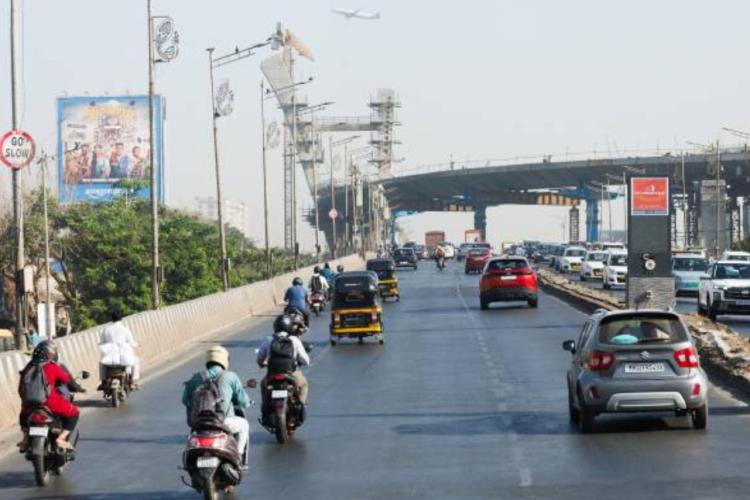Investment-led growth model for India: A growing body of empirical evidence suggests that ramping up investment could hold the key to reducing income inequality in emerging economies like India. An analysis of economic trends from 2004 to 2020 reveals a clear negative correlation between investment and income inequality in both India and China. While the two nations began their development journeys from similar starting points, China’s focused investment-led strategy has been far more effective in narrowing income gaps—a lesson India would do well to absorb.
In the early 1990s, India and China were on roughly equal footing in terms of economic growth and per capita income. Yet over the subsequent decades, their paths diverged sharply. China opted for an investment-heavy growth model, while India leaned towards consumption-led expansion. The results are telling.
READ | Trump’s tariff war: China’s silent strategy against US blitz
According to data from the International Monetary Fund (IMF), China’s investment-to-GDP ratio stood at 36% in 1995, already well above India’s 25%. This gap widened in the early 2000s, with China’s investment rate breaching 40% and peaking at 46% in 2010. India, meanwhile, struggled to push past the 30% mark, constrained by macroeconomic shocks, infrastructure bottlenecks, and a dip in business confidence.
The consequences of these contrasting approaches are starkly visible in indicators like the GINI index—a widely used measure of income inequality. Between 2004 and 2020, China’s GINI index declined modestly from 44.58 to 44.12, while India’s rose from 50.23 to 52.31, indicating a worsening of income inequality despite headline GDP growth.
Comparative analysis: Investment vs inequality
The differences in gross capital formation between the two countries further reinforce the argument. In 2004, China’s GCF stood at 41.85% of GDP, compared with India’s 35.10%. Though the gap briefly narrowed in 2006, it widened again after 2012. By 2020, China’s GCF had climbed to 45.40%, while India lagged at 30.96%, marking a significant 14.44 percentage point difference.
This disparity is mirrored in the evolution of income inequality. In 2004, India’s GINI index exceeded China’s by 5.65 points. This inequality gap peaked at 8.4 points in 2014 and remained wide at 8.19 points in 2020. The data is unequivocal: while China’s investment-led model helped reduce inequality, India’s consumption-centric approach has done little to narrow the wealth gap.
How investment reduces inequality
China’s experience offers valuable insights into how strategic investments can foster inclusive growth.
Job creation: Massive infrastructure and manufacturing investments created millions of jobs for low-skilled and rural workers in China. Projects such as high-speed rail, highways, and airports generated employment across sectors. For instance, between 2010 and 2020, the expansion of China’s rail network from 9,000 km to 38,000 km directly boosted job opportunities. India, by contrast, has lagged in infrastructure investment, limiting employment generation in these crucial sectors.
Human capital development: Investment in education and skills training plays a crucial role in raising productivity and earnings. Between 2000 and 2020, China saw the number of university graduates rise from 1 million to 8 million annually, backed by state funding and policy support. India, however, spends just about 4% of its GDP on education—lower than several developing nations such as Namibia and Bolivia, which invest nearly 9-10%.
Financial access for the underserved: China’s rural banking reforms in the 2000s made credit more accessible to farmers and small entrepreneurs. Between 2005 and 2015, rural lending volumes tripled, spurring rural development and small business growth. While India’s Jan Dhan Yojana has expanded bank account access, actual credit disbursement in rural areas remains limited.
Economic diversification: Strategic investment also enabled China to diversify into manufacturing, technology, and renewable energy, reducing its dependence on agriculture. By 2020, China’s clean energy sector alone had created over 4.3 million jobs. India’s over-reliance on the services sector, which disproportionately benefits urban and higher-income groups, has deepened structural inequality. Greater investment in industrial and emerging sectors could broaden opportunity and income sources.
India must pivot to investment-led growth
India’s economic trajectory over the past two decades has been consumption-driven, with private consumption accounting for 60% of GDP in 2020—far higher than China’s 40%. While consumption can fuel short-term growth, it tends to concentrate wealth in the hands of those already well-off. This model has disproportionately benefited urban, educated professionals while leaving rural populations and low-skilled workers behind.
A pivot to investment-led growth is not just desirable—it is necessary. Strategic capital deployment in infrastructure, education, finance, and industry could catalyse a more equitable economic transformation.
China’s success underscores the power of targeted investment backed by cohesive policy reforms. By channelling capital into sectors that uplift the broad base of the population, China not only accelerated growth but also tempered the rise in inequality.
India faces a unique window of opportunity. With the right investment priorities and institutional support, the country can build a more inclusive growth model—one that delivers prosperity not just in aggregate terms, but equitably across all sections of society.
Nudi Manjunath is a student, and Dr Muzffar Husain Dar Assistant Professor at Dr BR Ambedkar School of Economics University, Bengaluru.

